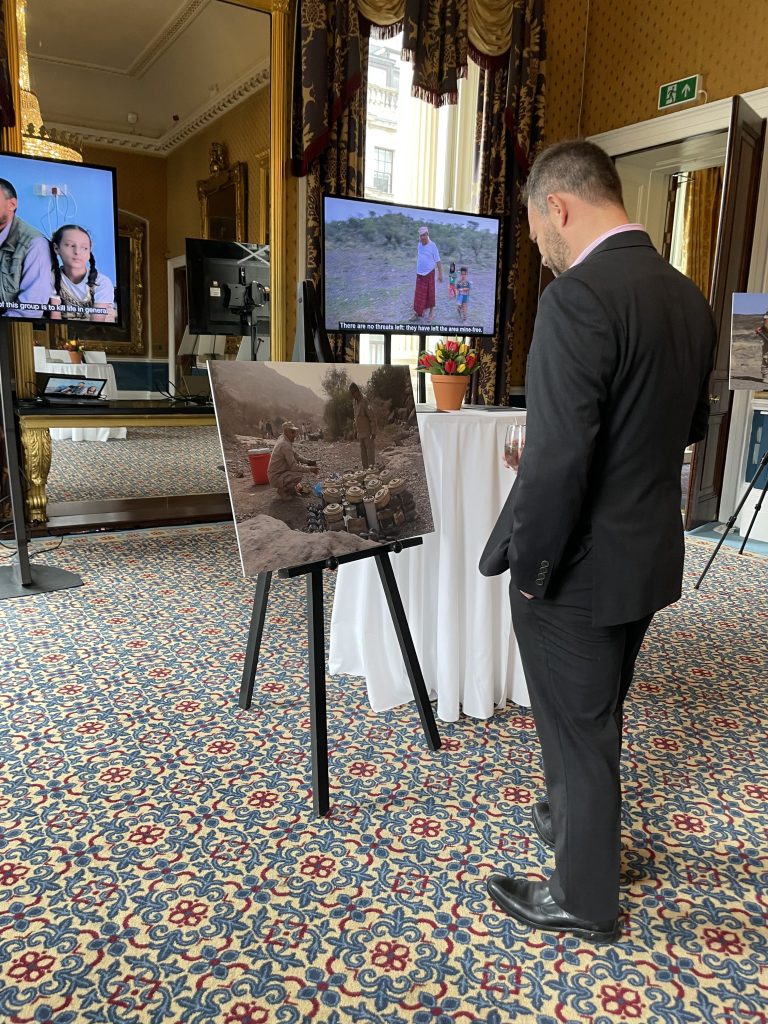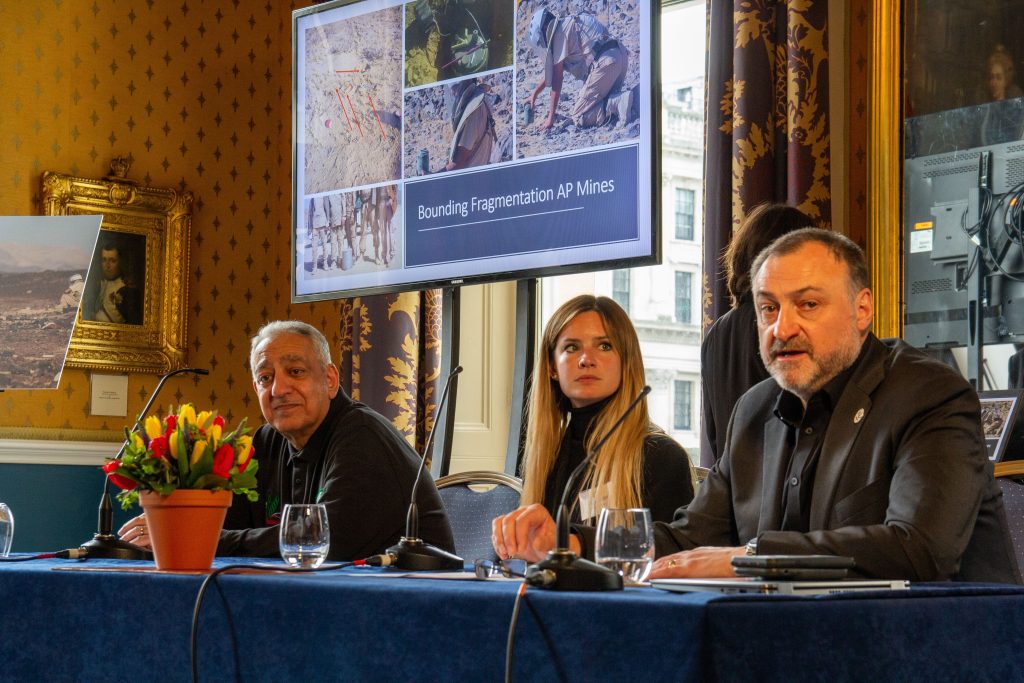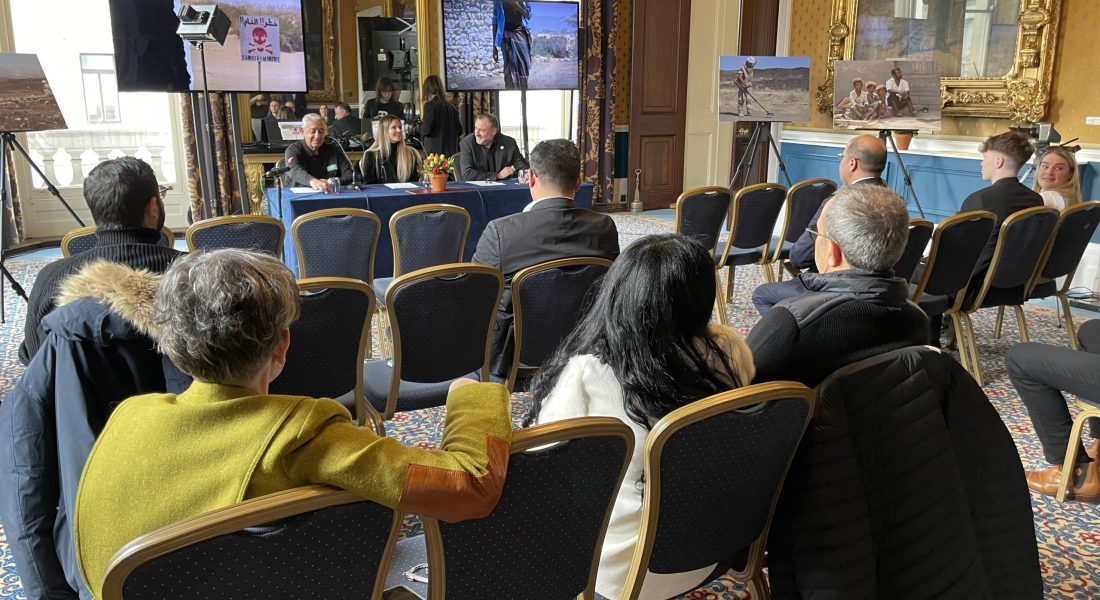Project Masam marked International Mine Awareness Day (4 April 2022) by holding a photography exhibition followed by a panel discussion with mine action experts, who shared insights into the Yemeni conflict and its impact on the proliferation of landmines.
Since 2015, 4 April has been the International Day for Mine Awareness and Assistance in Mine Action, a day during which the sector raises awareness of the dangers that landmines pose to civilians’ safety, health and life, and commemorates the incredible work of deminers who risk their lives every day to make every step and every home, safe.
This year, Masam celebrated this special day under the theme ‘Safe Ground, Safe Steps, Safe Home’ by holding a three-day photography exhibition – ‘Life… Without Landmines’ – at the Institute of Directors in London, UK. The free-to-attend event showcased the life-changing work carried out by the demining teams in Yemeni liberated areas to remove thousands of man-made anti-tank and anti-personnel landmines, IEDs and UXO amid the ongoing conflict, as well as the impact of landmines on civilian populations.
Running until Wednesday 7 April, the event is open to the general public as well as the media and press. Notable visitors also included award-winning Jordanian-Yemeni documentary filmmaker Nisreen Al-Sbeihi Noman, whose work has focused mainly on the civil war in Yemen, and the plight of civilians living amongst landmines.




On the first day, the exhibition was followed by a panel discussion on “The future of landmine clearance in Yemen”. Moderated by freelance journalist Elsa Buchanan, the panel discussion brought together Ousama Algosaibi, Managing Director and Programme Manager for Project Masam, and Chris Clark MBE MC, Director Special Projects for Project Masam, who have been working in the mine action sector for over 30 years respectively.

Since the conflict between Yemen’s pro-government forces and Houthi militias escalated in 2014, liberated strategic areas have been left cluttered with anti-personnel mines and anti-tank mines, along with unexploded explosive remnants of war. Whilst the Houthis’ use of landmines has been widely documented since at least 2015, the sheer number of landmines planted in recent months has led experts to warn that the armed group’s new tactics could hamper mine eradication in Yemen, as well as pose an increased threat to the safety, health and lives of Yemenis.


Algosaibi talked about how “Houthi [forces] did not leave one safe spot. Victims have no idea what they’re encountering leaving their house or going to school.”
Clark commented further on how he has come across landmines planted in school buildings, hospitals and even people’s gardens and homes and has “never seen in all depths of depravity this improvised usage of mines”. He continued to talk about how you could add together the number of landmines used in all of the countries affected over the years, but it still wouldn’t come close to the scale that is being seen in Yemen right now. Algosaibi added that, in 20 years of conflict in Lebanon, the demining teams had found and cleared 384 rock mines, compared to over 7,000 cleared in Yemen in just four years.
While Yemen is one of 164 state parties to have signed the Ottowa Treaty (more formally known as the Convention on the Prohibition of the Use, Stockpiling, Production and Transfer of Anti-Personnel Mines and on their Destruction), the Houthi forces, who consider themselves to be the government within Yemen, are still yet to hand on over any maps or details pertaining to the location of the many landmines they have been planted around the country.

Since mid-2018, when Masam first started operating in Yemen, its demining teams have cleared and removed:
• 120,000 anti-tank mines
• Almost 5,000 anti-personnel mines
• More than 7,000 IEDs and Rock Mines
• Almost 200,000 UXO

